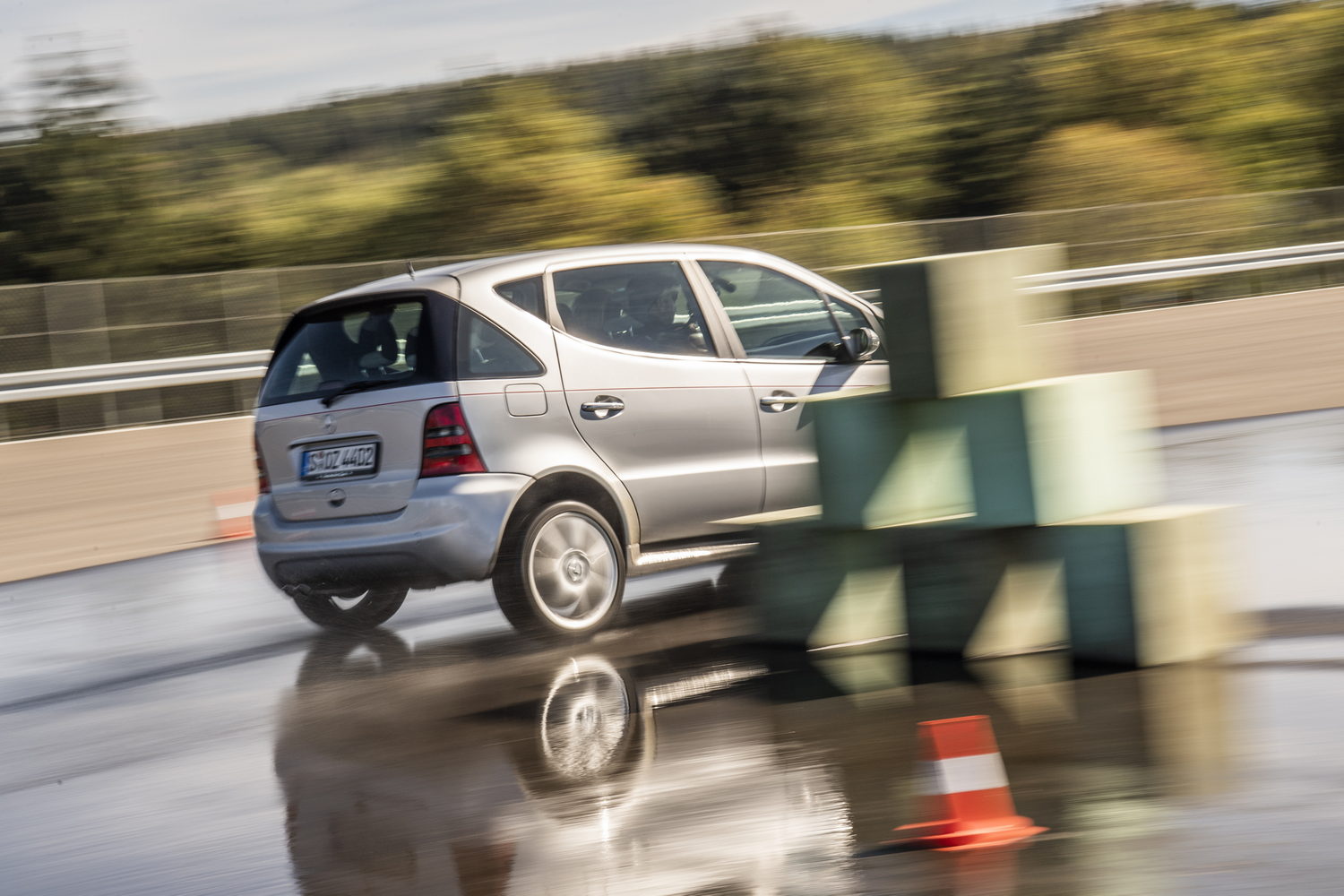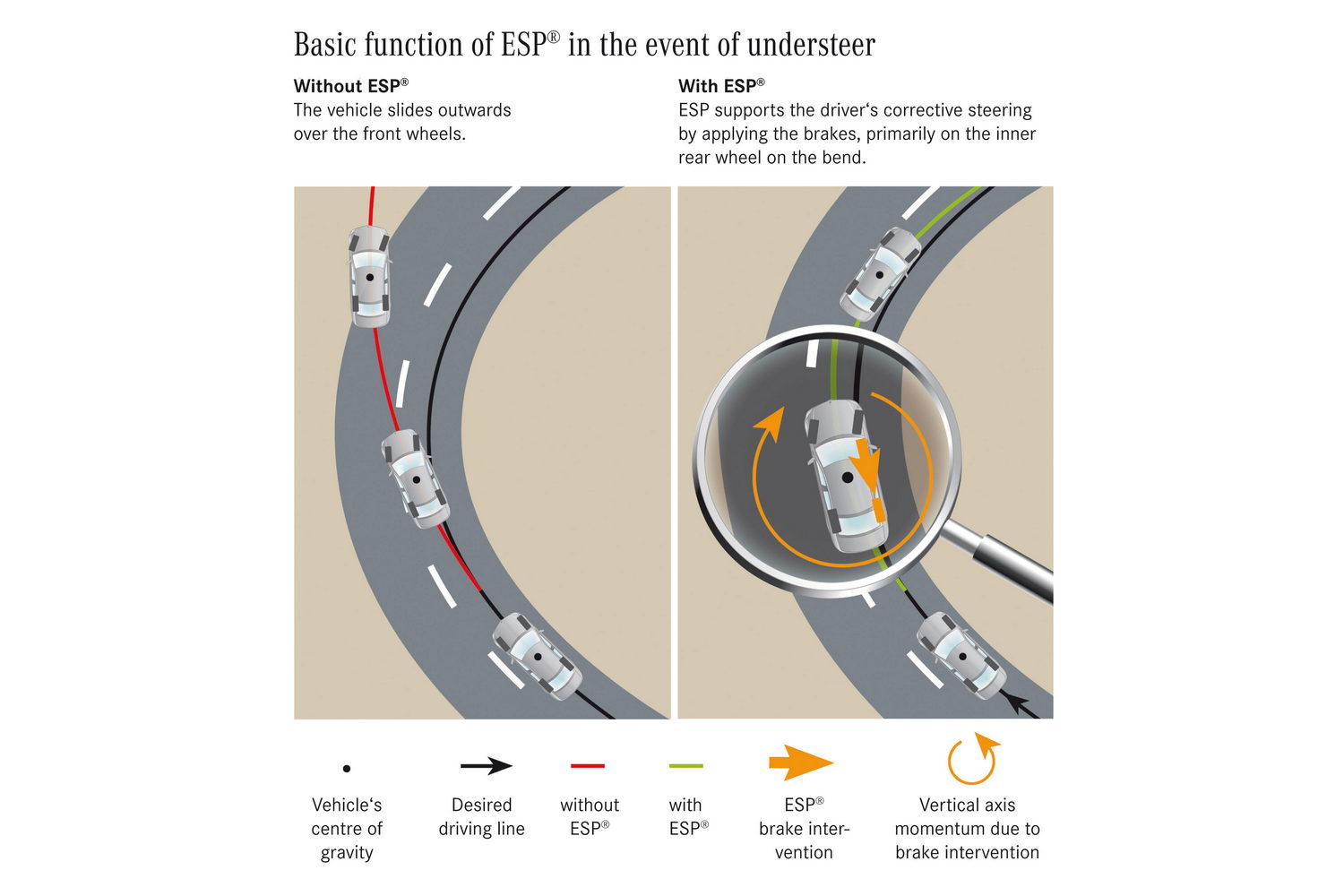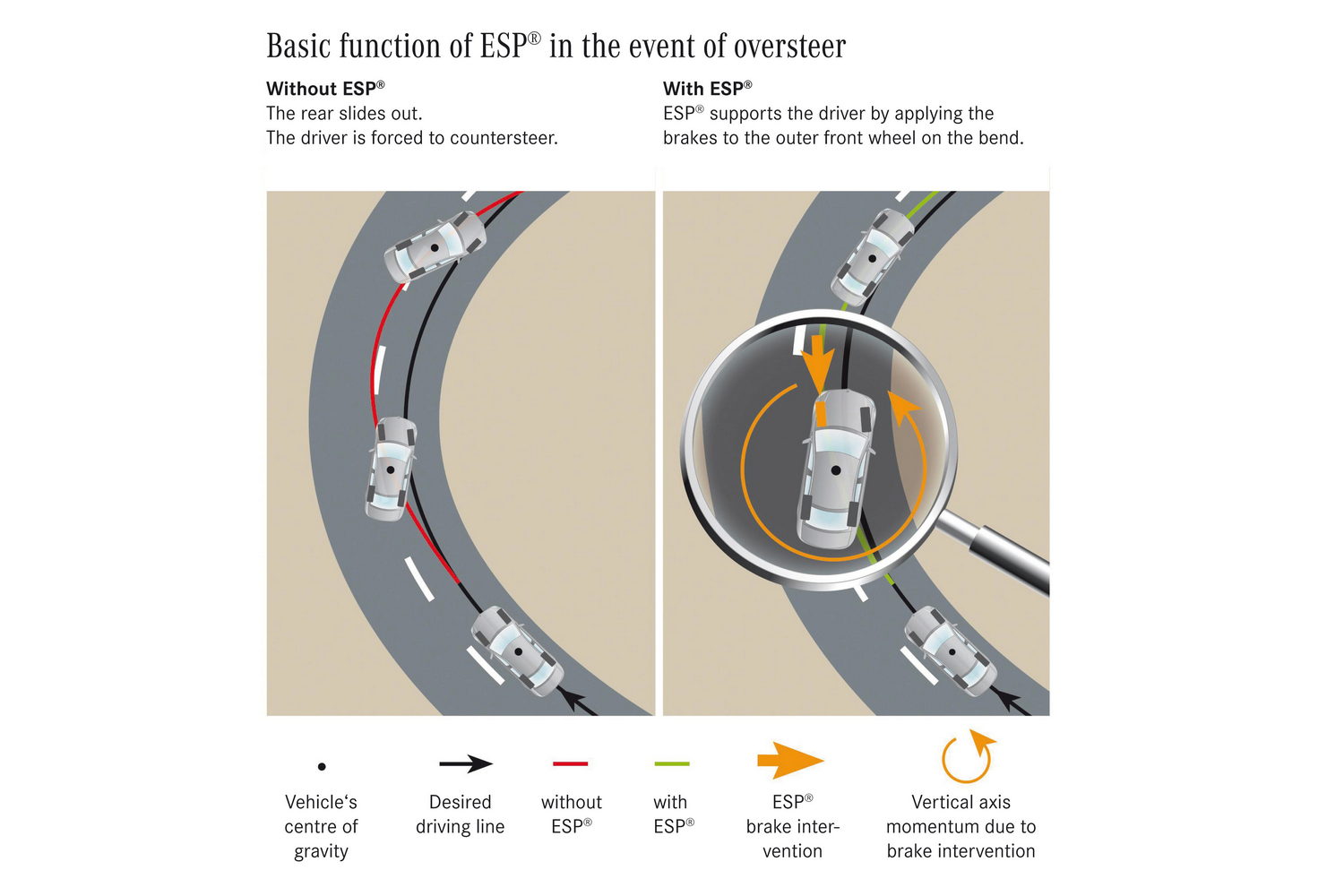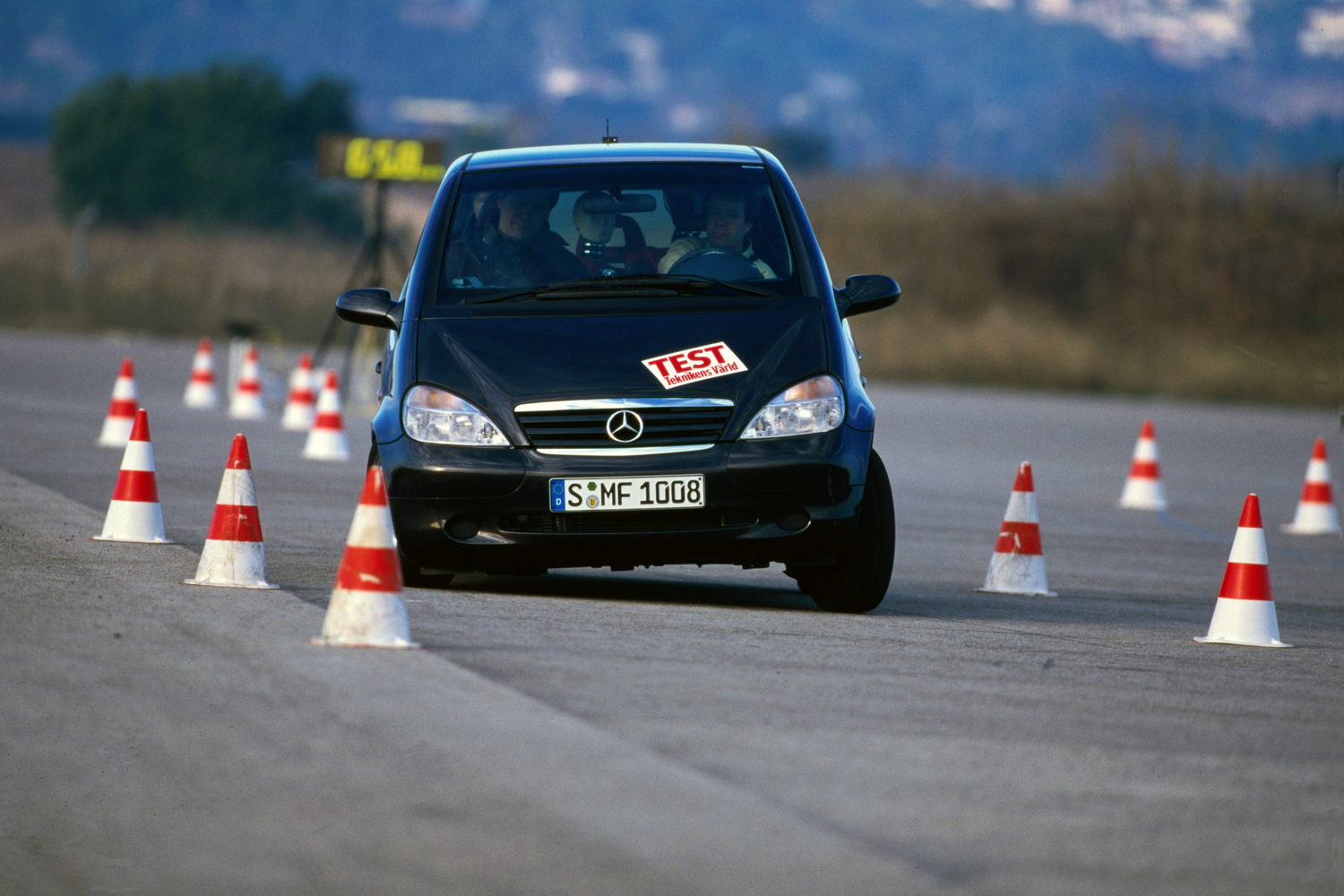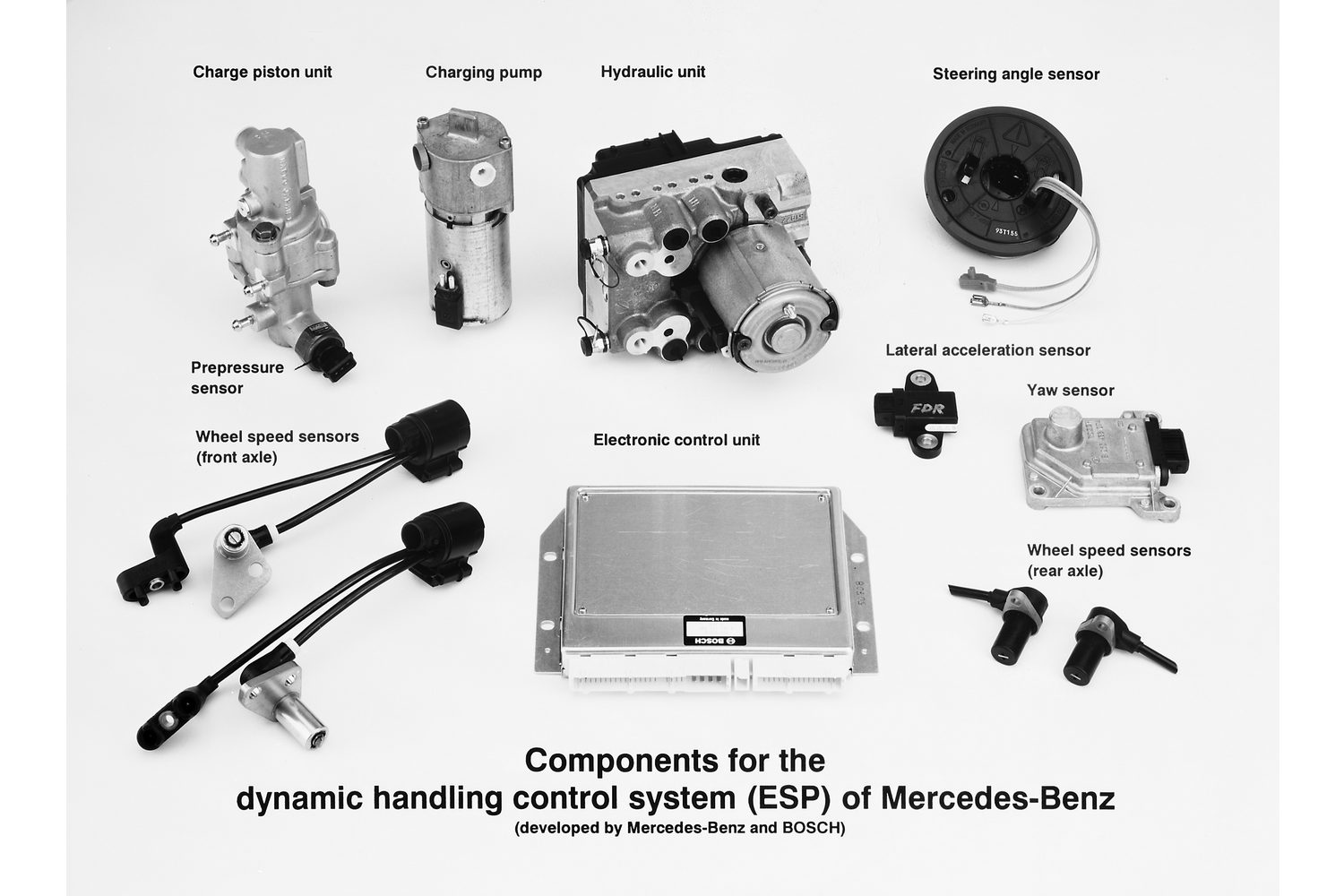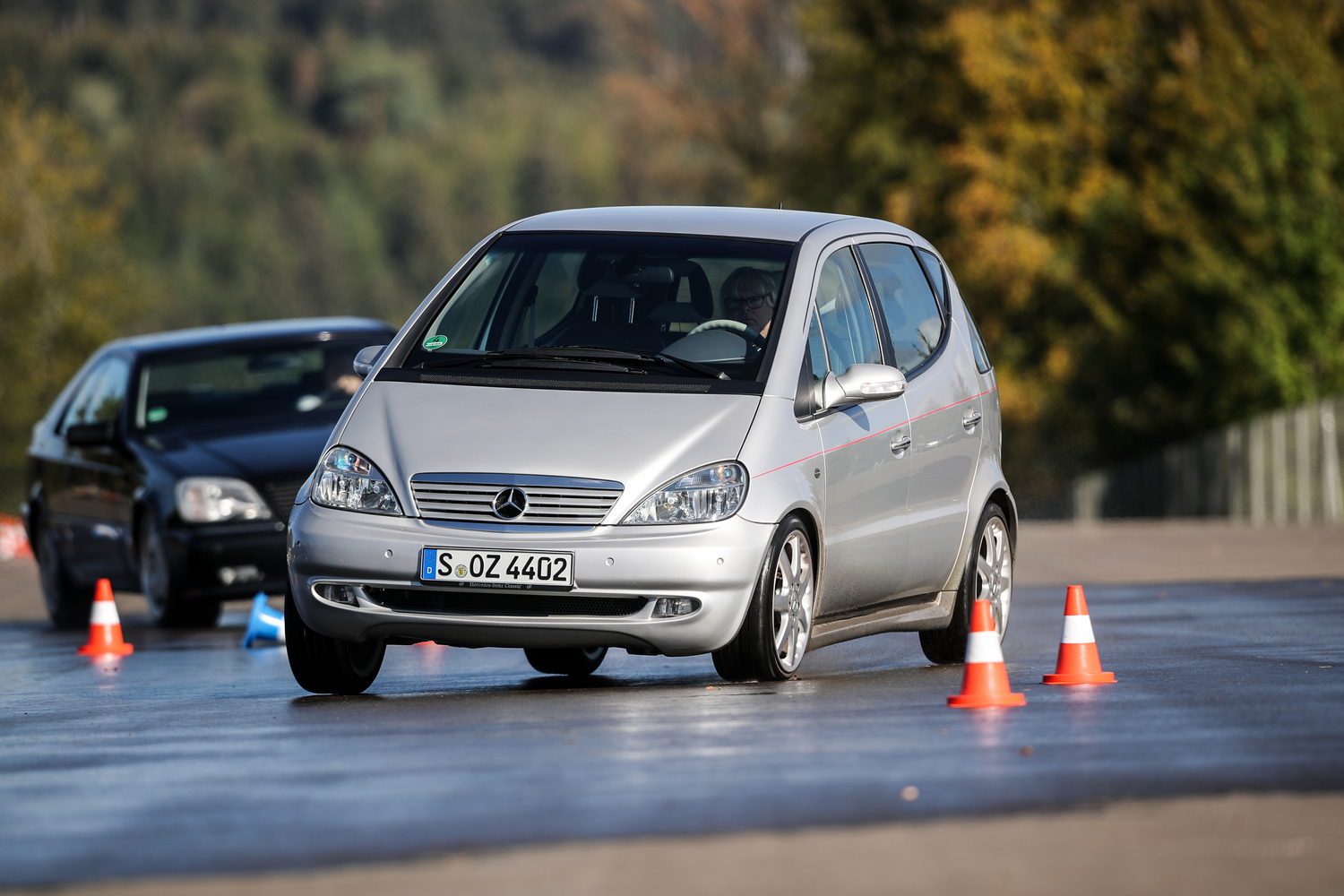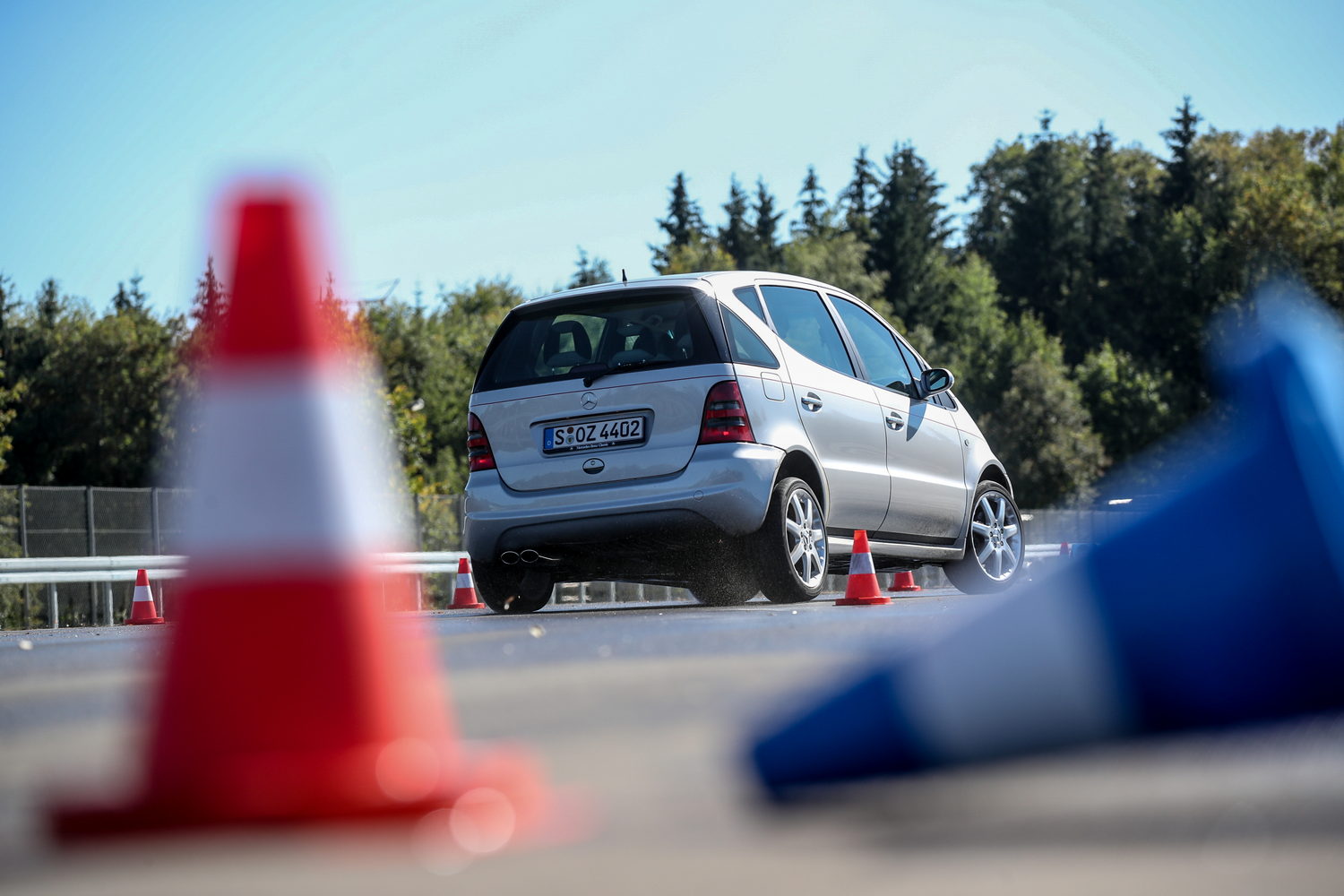Electronic stability control is known by many names, or at least acronyms, including ESP, DSC, ESC and DTSC. There are nuances and differences in how they work, but basically whatever the abbreviation, the effect is the same - if you lose control, your car can help you get it back, often before you realise anything is happening.
The story behind stability control is attributed to Mercedes engineer Frank-Werner Mohn, who apparently slid off an icy road while putting development miles on a W124-era Mercedes E-Class. Sitting in a lonely ditch next to an equally lonely road in northern Sweden, and waiting for someone to come along and pull the car out, Mohn apparently had the brainwave that an electronic control system, using sensitive gyroscopes to compare a car's predicted behaviour with its actual behaviour, could have helped him keep tyres on tarmac. Stability control was born.
"Once they saw this technology could safely prevent a skid while taking a corner, the board approved it at once," Mohn told Autocar magazine in 2017. "At the time, this was a revelation."
A revelation indeed. Mohn apparently tried to use the gyroscopic sensor from a toy remote control helicopter in the original stability control prototype, before finding that the one from a Scud missile (another 1990s celebrity, so to speak...) was a far better bet as it was much more sensitive.
Mohn's crash happened in 1989, and by 1991 the system was ready to use, earmarked for its first production model - the Mercedes S-Class of 1995. However, Mercedes (which tends to get the credit for stability control) wasn't on its own in developing the system. BMW was working on it too...
Indeed, BMW had put a form of stability control into widespread production in 1992, even offering it on the relatively affordable 3 Series whereas Mercedes was reserving its system for the S-Class alone. The difference is one of sophistication. BMW's ESC, co-developed with Bosch and Continental, was a simpler setup and really more of a traction control system with some limited overall stability control included. The Mercedes system (also worked on by Bosch) was cleverer and more broad-spectrum capable.
Both systems had their genesis in anti-lock brake systems (ABS). Originally developed for aircraft, and first put into road-car production by the tiny British-based Jensen sports car company (which created a four-wheel-drive, anti-lock-brake equipped version of its V8 Interceptor coupe, called the FF), it's the ability of anti-lock brakes to rapidly apply and release braking pressure that unlocks the door to stability control.
By rapidly applying and then releasing the brakes on individual wheels, stability control basically steers the car with the brakes, preventing a skid or a slide from happening, or reducing its severity if it has already started. More sophisticated recent systems can also call on electronically controlled steering to pitch in to help, but in its simplest form stability control is steering by braking. The system piggy-backs on the ABS and traction control sensors to detect when one or more of the car's wheels are moving faster than they should be. If they are, that means that a skid is developing, and the car might go out of control. So, those wheels will be braked and slowed back down to bring the car back under full control, while the gyroscopic sensor will tell the system if the car is travelling at an unacceptable angle to the direction of movement - i.e. that the back end is sliding out while the car is still travelling forwards.
Stability control might have remained the preserve of high-end, expensive vehicles but for one particular incident - when a journalist working for a Swedish car magazine managed to barrel-roll a Mercedes A-Class while attempting the violent 'elk test' swerve. Stung into action, Mercedes offered all A-Class customers a free retrofit of stability control (along with modified suspension and steering), while also rolling out stability control as standard on the A-Class. At the time a Mercedes spokesperson said: "The company had little choice. As Daimler-Benz and Mercedes-Benz, we have to go over the top."
That was in 1997, by which time other car makers were starting to cotton on to the benefits of stability control. By 2000, Ford was offering stability control as an option on the family-friendly Focus, but few Irish customers took up that offer. The cost of stability control at the time was high, and many buyers preferred to purchase options that they could actually see - such as a sunroof or nicer alloy wheels - rather than a safety system whose effects they may never actually experience.
In the background though, moves were afoot to make stability control a requirement rather than an option. The American National Highway Traffic Safety Administration (NHTSA) postulated in 2004 that one third of all fatal accidents could be avoided if the vehicle in question were fitted with stability control. By 2011, the Canadian government had brought in legislation that compelled car makers to fit stability control as standard, and that move was followed by identical legislation in the US and the EU in 2012 and 2014.
Today, every single car on sale in the EU has, by law, to use stability control, and the effects have been startling. In 2010, across the EU, 29,576 people were killed in fatal road accidents. By 2019, five years on from the mandatory use of stability control in new cars, that figure had dropped to 22,755. Not all of that fall can be directly attributed to stability control, of course, but it's a major contributor.
Indeed, it's reckoned that there are around one million more people alive today than would have been had a Mercedes engineer not been stuck in a snowy ditch, waiting for a tow-truck, in 1989.

